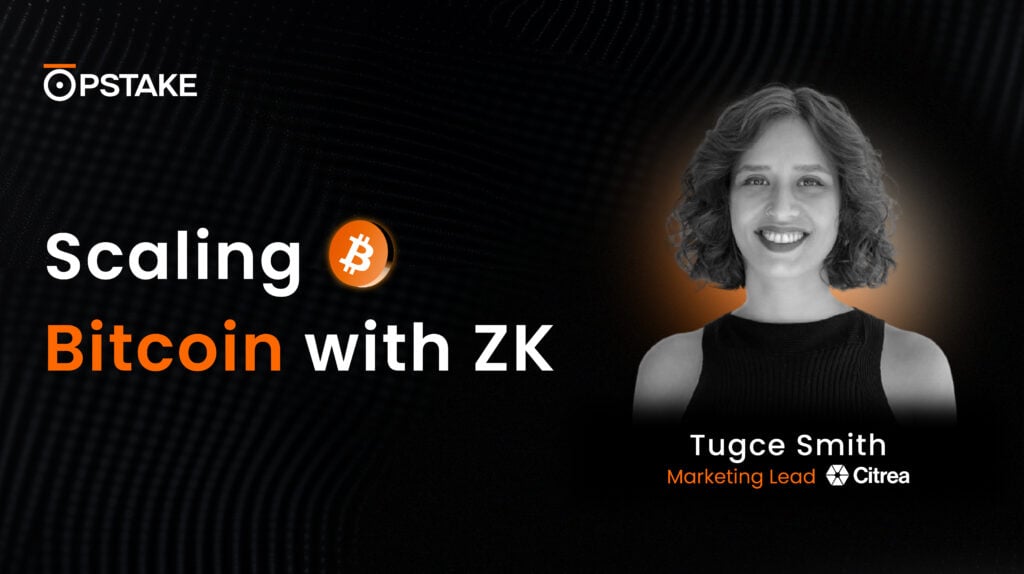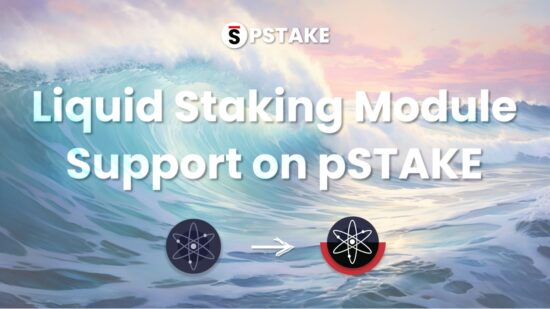Cosmos LSM Overview
For a better part of Cosmos Hub’s existence, earning staking rewards by staking ATOM for securing the Cosmos Hub has been a preferred choice vs using ATOM in DeFi. Though DeFi eventually found its way to Cosmos, a big chunk of ATOM was already staked. The high inflationary yield presented the most significant dilemma for users when deciding whether to “Stake” or “DeFi.”
Even though liquid staking promised a big transformative shift, it posed challenges with its barriers to entry, like existing high ATOM staking ratio, low ATOM liquidity, and a semi-mature DeFi landscape. Existing stakers who wished to liquid-stake their ATOM with Liquid Staking Providers like pSTAKE faced a daunting 21-day unstaking process, resulting in the forfeiture of staking rewards and an overall suboptimal user experience.
But that is about to change. Gone are the days of Staking OR DeFi. Enter: Liquid Staking Module (LSM) support on pSTAKE: A simple, more efficient way to liquid stake natively staked ATOM. Here’s how 👇
Let’s say Alice has a total of 10,000 ATOM natively staked across 5 validators of her choice. LSM support on pSTAKE will allow her to do the following:
1. Go to http://cosmos.pstake.finance and choose to Liquid Stake her staked ATOM using LSM
2. See all 5 individual staked ATOM delegations
3. Select the validators and amount of staked ATOM she wishes to liquid stake
4. Sign 3 quick transactions to convert staked ATOM into liquid stkATOM that can be used in DeFi (Dexter, Umee, Shade Protocol, Crescent, Osmosis, Nolus, and more in the future)
What the LSM support on pSTAKE means for ATOM stakers
The introduction of the Liquid Staking Module (LSM) marks a significant evolution in the ATOM LSTfi ecosystem within Cosmos. Not only does it provide existing ATOM stakers with a seamless way to liquid stake, but it also functions as a safety framework and regulatory layer for Liquid Staking Providers.
Along with other exceptional teams like Iqlusion, Binary Builders, Stride, Informal Systems, Hypha Worker Co-operative, and Persistence Core-1, the pSTAKE team has actively contributed to the development of LSM in the last few weeks. Adding support for LSM on pSTAKE is the next natural step to offer Cosmonauts a unique opportunity to reap the benefits of this groundbreaking development.
Let’s dive deeper into the key features and changes that this LSM support on pSTAKE brings:
| Natively staked ATOM | Before LSM | After LSM |
| Instant ATOM liquidity | No | Yes |
| Unbonding required to liquid stake | Yes (21-day unbonding) | No |
| Forfeiting staking rewards during the unbonding period | Yes | No |
| Use case | Only staking | Staking and DeFi with stkATOM |
| Acess to ATOM liquidity | Limited, no flexibility during market volatility or urgent financial needs. | Easy, high flexibility to liquid stake, trade or instantly redeem for ATOM |
| Validator selection choice | Yes, you select the validator(s) | Yes, the staked ATOM remains with your existing validator if they are a part of pSTAKE’s 62 validator set |
Overall, the LSM adds various risk management parameters in place for scaling ATOM liquid staking by opening the gates for $400M+ ATOM (natively staked) to be liquid staked instantly and conveniently on Liquid Staking Providers like pSTAKE.
What happens in the background
When a user initiates the liquid staking process, the pSTAKE protocol orchestrates a series of steps to provide a seamless and secure experience. Here’s a breakdown of the behind-the-scenes activities:
- Tokenizing your staked ATOM (Transaction #1 for a user): The liquid staking process is initiated with the Liquid Staking Module tokenizing existing staked ATOM delegations and converting them into NFTs (tokenized delegations) with attributes like reward address, validator, etc.
- Transfer to Persistence Chain (Transaction #2 for a user): 3. The tokenized delegations are then transferred from the Cosmos Hub to the Persistence chain through the Inter-Blockchain Communication (IBC) protocol.
- Liquid Staking and Minting of stkATOM (Transaction #3 for a user): Finally, tokenized delegations are deposited into the pSTAKE protocol, where a series of rigorous checks are performed to ensure the security and validity of the liquid staking process.
These checks include but are not limited to verifying the following:
- Verification of the delegations specified delegations
- ATOM was staked to one of pSTAKE’s 62 active validators and has sufficient ‘Validator Bond’*
- Validator is not jailed on the Cosmos Hub
- Validator has the capacity to receive delegations
- The ‘Global Liquid Staking’* has not been exceeded
Once all of the above is successfully verified, the pSTAKE protocol proceeds with the actual liquid staking of the tokenized ATOM delegations and mints stkATOM based on the current stkATOM exchange rate.
*Validator Bond: LSM requires validators to self-bond 1 ATOM for every 250 ATOM delegations they wish to receive from liquid staking providers.
The Validator Bonds increase each validator’s skin in the game. The self-bonded amount can be slashed for malicious behavior and will also determine the amount of delegations it receives from liquid staking providers like pSTAKE.
*Global Liquid Staking Cap: The global liquid staking cap is a part of the LSM that mitigates liquid staking risks by limiting the total amount of ATOM that can be liquid staked to 25% of all staked ATOM.
The Global Liquid Staking cap ensures that ATOM liquid staking scales in a risk-averse manner by placing a limit on the total amount of ATOM available for liquid staking.
Note: While the underlying mechanism may appear complex, pSTAKE’s user interface and experience have been meticulously designed to ensure simplicity and a hassle-free process for its users.
User Guide: Liquid Staking Staked ATOM with pSTAKE using LSM
- Go to Cosmos.pstake.finance and connect your Cosmos wallet. Make sure you have connected the same wallet you have used for staking ATOM natively.
- On the Staking tab, you will see a drop-down with the two options:
(i) Liquid Stake using wallet (default)
(ii) Liquid Stake your staked ATOM using LSM
Select option (ii) for liquid staking your natively (already) staked ATOM with pSTAKE using the Liquid Staking Module (LSM)
- You will see the list of all validators you have staked with and the corresponding ATOM staked amount. Please note that if a validator is in the not-eligible section, that means that either the validator is jailed or is not in pSTAKE’s validator set of 62 validators.
- Select the validator(s) and enter the amount of staked ATOM you wish to liquid stake. The minimum amount to liquid stake using LSM is 0.01 staked ATOM.
- Click on the “Liquid Stake” button and approve by signing the following transactions
(I) Approve to tokenize your staked ATOM
(ii) Approve to transfer to Persistence
(iii) Approve to liquid stake with pSTAKE - Congratulation! You’ve successfully liquid staked your staked ATOM with pSTAKE and can use stkATOM in DeFi (Dexter, Umee, Shade Protocol, Crescent, Osmosis, Nolus, and more in the future)
Final thoughts
With the launch of the LSM support on pSTAKE, the gates have swinged open, unleashing the potential of over $400M worth of staked ATOM for liquid staking on LSPs like pSTAKE that support it. With LSM support on pSTAKE, you can:
- Instantly liquid stake your staked ATOM without the need for unbonding.
- Participate in DeFi with stkATOM
- Liquid stake with the same validator you have originally staked your ATOM with (if they are a part of pSTAKE’s 62 validator set)
Important Note: LSM support on pSTAKE went live after the successful v9 Katami software upgrade on Persistence and v12 upgrade on Cosmos Hub. This upgrade not only unlocked instant-staked ATOM liquidity but also enhanced safety measures for ATOM liquid staking. Rest assured, the LSM on pSTAKE code has been thoroughly audited by Halborn and rigorously tested by the pSTAKE and Persistence Core-1 teams.
Food for thought for ATOM Stakers: It’s time for ATOM LSTfi, so why just stake when you can liquid stake 🤔










